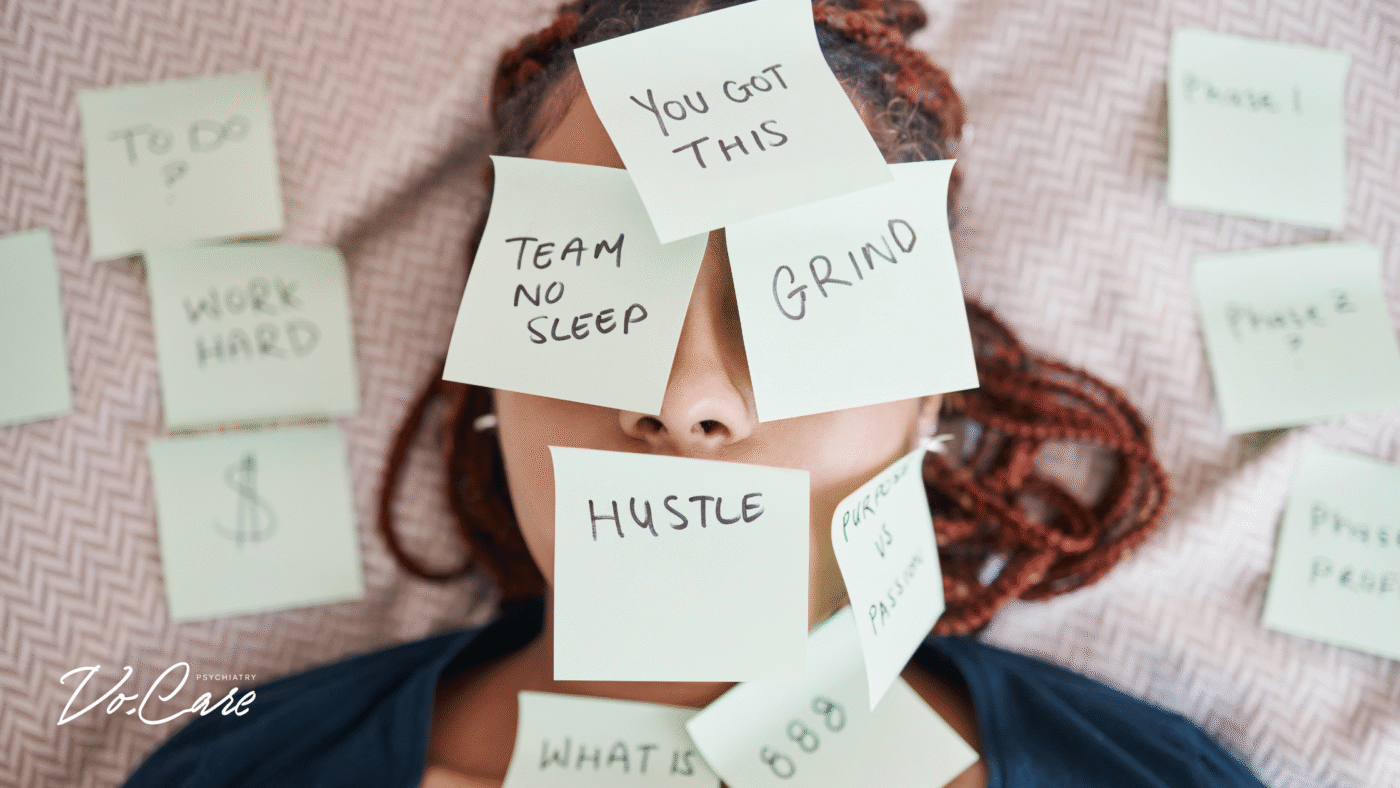TL;DR
Hustle culture tells us that “busy” equals “worthy.” The result is burnout that creeps in quietly—fatigue, short tempers, hair loss, missed deadlines—until something snaps. Psychiatrist Dr. Krysti Vo and coach Alexandra Stark offer a calmer script: begin with honest reflection, add one tiny habit that fits on your worst day, practice clear boundaries without guilt, and let motivation grow from relief. If you missed it, the Oct 15,
Many of us measure our value by output. We move faster, carry more, and call the strain “normal.” The body keeps the score: tension headaches, stomach aches, persistent fatigue. At home, we snap at the kids. At work, we miss something small and feel the shame long after. From the outside, life can look polished; on the inside, the engine runs hot. If you’ve been wondering how to stop burnout, you’re not alone—and you don’t need a grand reinvention to begin. You need a steadier way to move through your day.
“Believe that you can change.” — Dr. Krysti Vo
Psychiatrist | Habit Change Expert
“Motivation comes second. Build the sustainable habit first.” — Alexandra Stark
Executive Coach | Burnout Coach | Therapist

In our live conversation, Alexandra Stark named a pattern she sees often: high-achieving women and overfunctioning professionals who have normalized stress as proof that they’re doing enough. By the time they ask for help, a crisis has already surfaced—an email missed, a sharp tone at home, a client disappointed. Dr. Krysti Vo invites a reset with one belief at the center: “Believe that you can change.” That shift makes space for new choices, then new habits.
Start with reflection—the first step in the YouHabits framework. Ask two simple questions: What am I doing with my life right now? What brings me joy? Write without editing. Then sketch two columns: Too Much (late-night work, constant messaging, default yes) and Not Enough (sleep, sunlight, play, quiet meals). You don’t need a perfect plan; you need a direction. Pick one item to reduce by ten percent and one to nudge up by a tiny step. That’s the backbone of habits to prevent burnout: small moves that align your day with what matters.
From there, Alex recommends a rapid-relief pass to lower pressure this week. Scan the basics—sleep, food, movement, connection, quiet time—and notice where the depletion is loudest. Catch the harsh story running in the background (“I never do enough”) and swap it for something kinder (“I’m learning to pace my energy”). Then choose one action that’s realistic on a bad day and make it smaller: three slow breaths before opening the inbox; a glass of water after coffee; a ten-minute walk after lunch; one optional meeting declined. Relief is the seed of momentum. As Alex puts it, “Motivation comes second. Build the sustainable habit first.”
Boundaries are the habit that protects every other habit. If you’re used to earning approval through availability, saying no can feel uncomfortable. Expect that. Clarity helps: “I can’t take this on and keep my current commitments. I can deliver a draft next Tuesday or a final next Friday—your pick.” Or, “I’m offline at 8:30 PM. I’ll reply in the morning.” That’s not defiance; that’s honest capacity. Each boundary you keep returns a piece of your day to you.
You may notice that what happens at work shows up at home. Over-availability in one domain often mirrors the other. Pair one boundary with one micro-habit in each space. At work, block a 25-minute focus window and silence chat; at home, take a 20-minute device-free pause with the people you love; for yourself, write three lines before bed: what mattered, what helped, what to repeat. None of this requires a perfect week. It requires a repeatable one.
If you’re considering therapy or coaching, fit matters. A good fit feels steady and collaborative. You feel heard, the plan makes sense, and each session leaves you a little clearer about next steps—medication monitoring when needed, specific experiments to try, a sense that someone is tracking the arc with you. Over weeks, you notice quiet changes: better sleep, fewer spikes in reactivity, more present minutes in a day that used to blur. If the connection or plan doesn’t land, adjust. Progress follows fit and follow-through.
Costs, coverage, and time all play a role. In many cities, telehealth can open earlier appointment slots and help you start sooner; in-person may take longer depending on specialty. Before you book, ask about fees, insurance, rescheduling, and message policy. Clear expectations reduce friction, which is one of the most reliable ways to prevent burnout during care.
None of this requires heroics. It requires a different definition of success—the kind that honors being fully with the task in front of you, then setting it down. It looks like a calendar with one protected block of focus. It sounds like a calm “no” that keeps a commitment you’ve already made. It feels like catching yourself in the old story and choosing a smaller, truer action instead.
If you want a place to begin today, start here:
-
Write your Too Much / Not Enough list. Circle one item from each.
-
Choose one tiny habit that’s possible on your hardest day.
-
Practice one boundary this week and let the discomfort fade with repetition.
And if you’d like support, Vo.Care offers psychiatry, behavioral therapy, and talk therapy alongside the YouHabits approach. We can help you clarify goals, shape tiny habits you can keep, and build a plan that holds when life gets loud. Start with YouHabits Step 1: Reflection, or visit vo.care/about to explore care and coaching options. If you missed it, our conversation with @talktoalexstark—“Why ‘Overwhelmed’ Isn’t a Badge of Honor: Habits for Balance & Joy”—aired Oct 15 at 8:00 PM ET on Instagram, with the replay available on IG.
If you’ve spent years wearing overwhelm like proof that you care, this is your invitation to care in a different direction. Not bigger. Not louder. Just steady—one habit, one boundary, one calmer week at a time.

